Camel Wrestling Festival in Turkey
Introduction
Camel wrestling festival dates back over 2,400 years and originated among the nomadic Turkic societies. Camel culture in Turkey dates back to the Yoruks, a nomadic people whose ancestors were the ancient warrior Selcuks, who arrived in Anatolia during the 11th century.
People interested in camel wrestling or camel owners say that the nomads used to have their camels wrestle as part of the competition between caravan owners. As the nomads settled, the camels were used for the transport of goods, mainly towards the western ports of Turkey.
Today, this camel wrestling league holds over 30 events across the country from November to March. Nearly 90 such events have been organized to take place in the region from Canakkale in the northwest to Antalya in the southwest between December and March. This is the reproductive season for camels — when the males who fight are naturally more aggressive — and a quieter period for residents, as agricultural activity slows in the winter.
The Selcuk festival, one of the most important event organized every year on the third weekend of January. In the winter you will see elaborately saddled camels being paraded through the villages with the owner extolling just how his camel is going to make mince-meat of anyone rash enough to challenge his beast. The camels are all fully grown bulls specially fed to increase their bulk further, and the sight of them wrestling one another would seem to promise some spectacular action. The sport is a declining one as the cost of keeping, feeding and training a camel solely for competition doesn’t come cheaply, and only a rich man can afford to do it. Large bets are wagered by owners and spectators alike, though how you tell just which camel won can be difficult to determine.
What happens when they both run away? – it happens. It’s worth going once just to see and it’s quite nice to know that there isn’t a lot of blood and gore involved in this traditional sport, it’s really quite gentle considering the size of these huge animals.
History of Camel Wrestling
Camel Wrestling is mostly common in the Aegean region of Turkey. Also organized in the Marmara and Mediterranean regions of the said country. In Turkey, there are over 1200 camel wrestlers bred specifically for the competitions. Camel wrestling rules may vary from different regions. In this kind of sports, it does not require a special field or spectators because most of the time camel wrestling competition was held for the purpose of fundraising for Education, Health, Culture, Sports or Social welfare organizations.
Male camels born to female camels with a single hump or those with double humps are allowed in this kind of competition. Wrestler camels are also known as Tulu camel. Pari-mutuel arrangements or betting were allowed in this competition. The proceeds from the camel wrestling tournament are used for certain purposes after the costs are deducted. The camel wrestling is mostly held during the winter months because during these months the tülüs are in fervor.
Every wrestling camel has its unique name. Camel names were enthused by how it behaves during wrestling matches or it was named after a popular character from TV shows. The name of the competing camel is written on a piece of cloth known as a peş and hung behind the saddle called havut. And beneath its name, the word Maşallah is also written which means “may God protect him.”
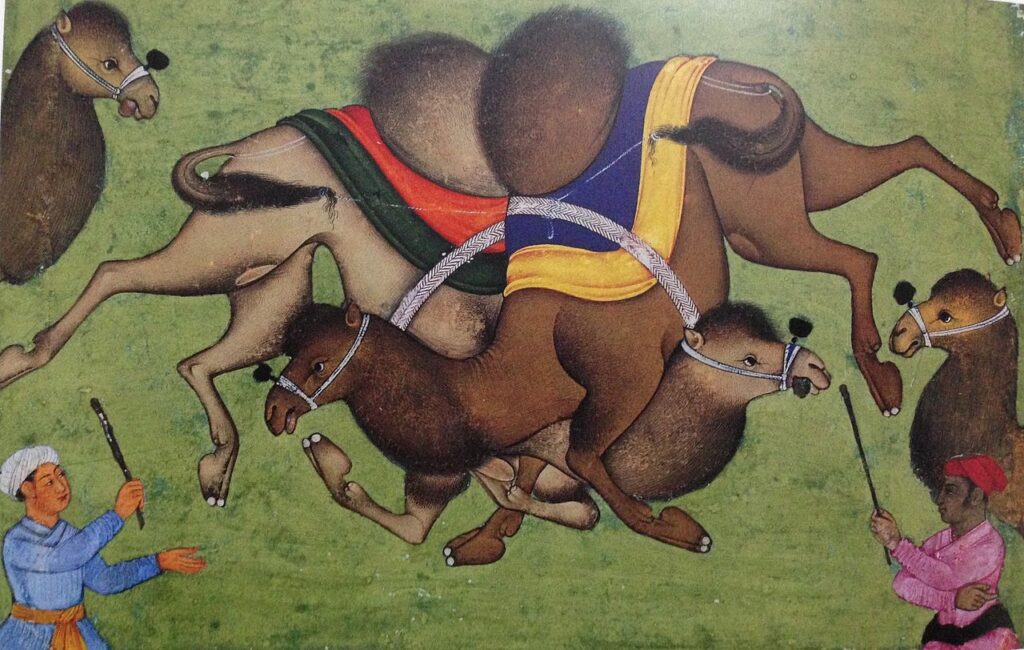
The event includes significant ceremony. Camel wrestlers are decorated in a manner set down by the tradition. They are walked through the streets with music played on drums and zurna on the day before the actual tournament. This event is very spectacular that everyone should see at least once. Camel owners were dressed in checkered caps, customary scarves around their neck, jackets, special pants and boots in an accordion-like shaped. On the night before the tournament, a Hali Gecesi or Rug Night was held attended by camel owners and wrestling lovers. This night is a kind of celebration to meet new friends and old acquaintances that will help them strengthen the bonds of their friendship wherein they enjoy the food, drinks and sing their native songs, dance and sell rugs at an auction.
One day before the wrestling contest, the camels are decked out in a manner prescribed by tradition. They are then walked through the streets accompanied by music played on the drums and zurna. This is a spectacle which everyone should see at least once. When you come into the town before a tournament, you can hear the zeybek music played with the drums and zurna and the sounds of bells dangling from the camels. The dressed-up camels are worth seeing. You could never tire of watching them. The entire town takes on a carnival atmosphere. Large crowds gather in front of the kahvehane, the tea houses where men (but not women) go to play cards or backgammon. Camel wrestling fans get involved in boisterous discussions about the camels set to compete.
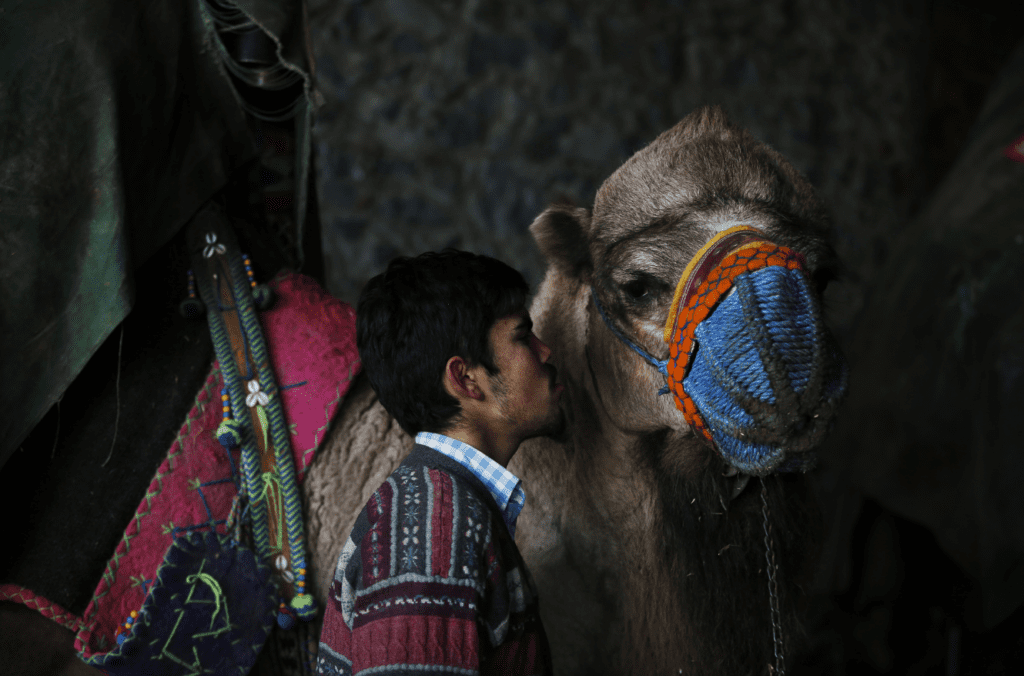
The camel owners are easy to spot due to their distinctive dress: cornered caps, traditional scarves around the neck, jackets, special trousers and accordion-like boots. Some camel wrestling enthusiasts who don’t actually own camels also dress in similar outfits. Some fans sit around TV sets to watch earlier wrestling contests which were videotaped. On the evening before the camel wresting contests, a “Hali Gecesi” (Rug Night) occasion is held with the attendance of camel owners and other guests. This is the sort of festivity where people meet new friends and old acquaintances strengthen their bonds of friendship. They eat, drink, sing songs native to their particular region, dance, entertain their guests and also sell rugs at an auction. This “Hali Gecesi” is definitely organized on the night before the wrestling. People prepare food beforehand and they eagerly await the wrestling competitions the next day.
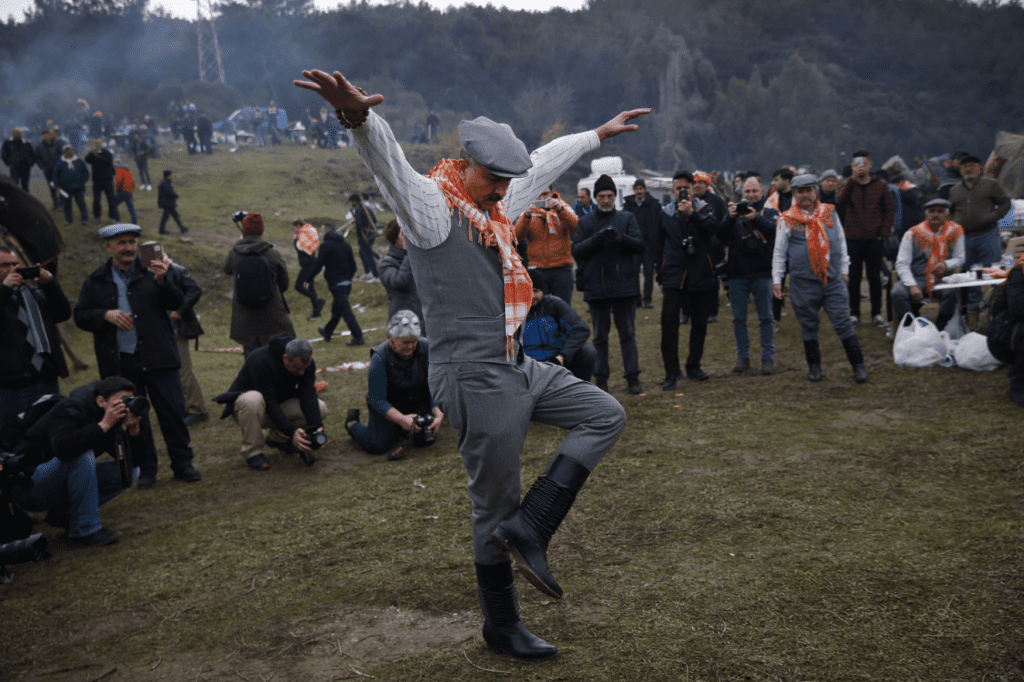
During the day of the actual tournament, the wrestling field was filled of spectators and street sellers offering a variety of food, drinks and souvenirs with matching band playing drums and zurna. Some people were inspired to dance the traditional dance zeybek. The cazgir announces the names of the camels set to compete that marked the start of the contest proper. He acts as a sports announcer just like in a soccer match.
The cazgir also reads distinct qualities of each camel that adds color to the contest. He is also the most important and colorful person in this event. Camels walk a lap around the field before the start of the wrestling match. In this match, there are three ways to determine which camel wins; if the camel makes it rival escape from the field, if the camel draw his rival with different tricks and games that his rival cannot stand and cries or if the camel makes his rival fall with tricks and sits on it.
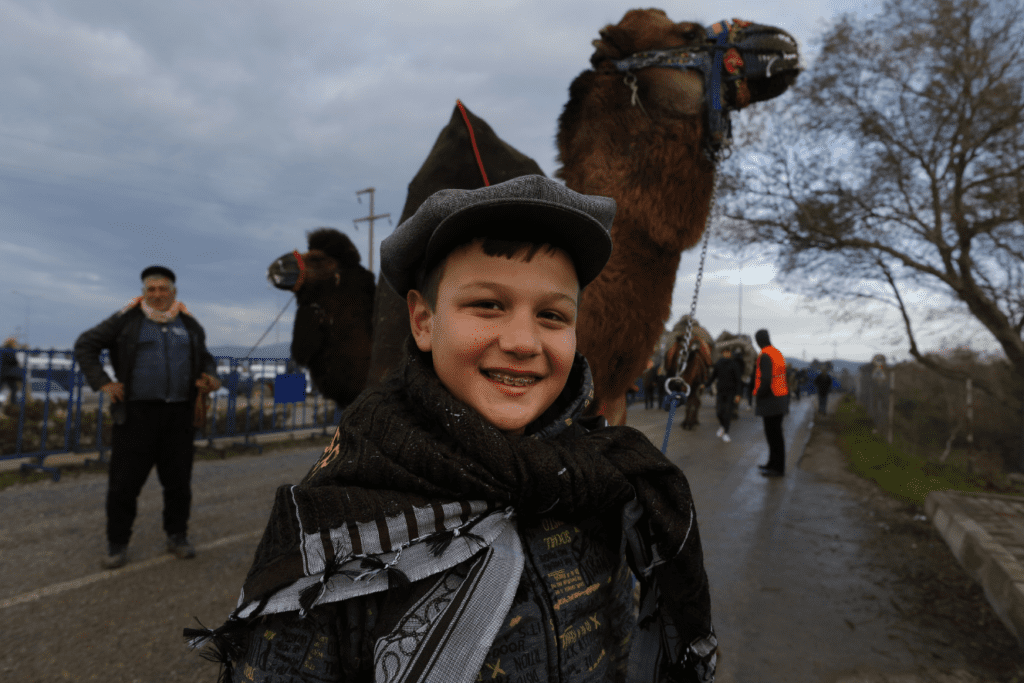
If the camel owner is more concern to his camel to prevent of being hurt than the victory, he can throw a rope on the ground which means that he accept defeat which is also called as pes (means give up). The wrestling match lasts for only 10-15 minutes and wrestler camel can compete once a day. The victorious camel brings its four feet and greets the audience very proud and received the rug as his reward and leaves the field while the loser camel shows stillness and humiliation. Camel wrestling events are held with both discipline and strong nod to tradition. The events were concluded with joy and proud as to the owners of the winning camel and wrestling fans who are all delighted of having a momentous day.
Understanding Camel Behavior
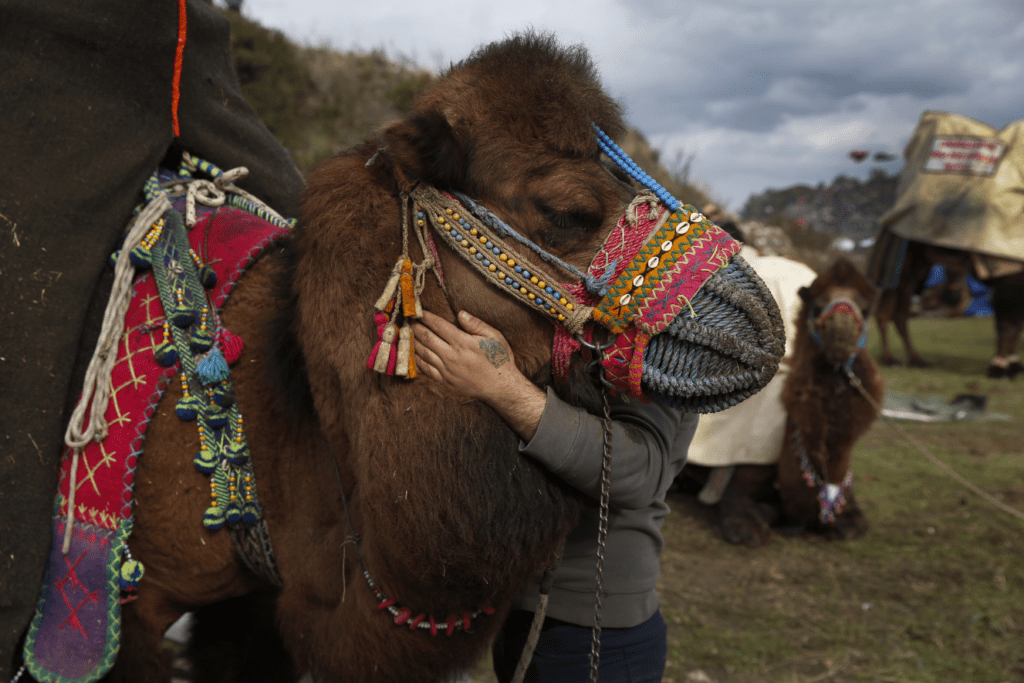
Camels are considered as sharks of the deserts. They can perfectly adapt to their environment: their thick foot pads can resist the roasting sand of the Sahara. Their blood cells can endure impious dryness, and their scat is so painstakingly drained of valuable water that can be utilized to stimulate them during fires. Camel wrestlers in Turkey are considered as body builders of their species, and they are carefully fed so as to be enormous, and become more grandiose as they marched through Turkish villages during winter.
They are often decorated with majestic finery, or armored. Camels appear to take it all in stride and always seem to be smiling, probably because humanity amuses them. Camel wrestling in Turkey is one of the most popular sports which also known to other neighboring countries. We may question why camel is used in this type of sports. Well, camel is natural wrestlers. Their humiliating technique is close to the method used by human wrestlers.

Camel Wrestling Techniques
Playing sports with an aggressive camel take a lot of courage and knowledge. One must be aware of the camel’s neck-hooking technique to avoid getting thrown to the ground. Camels, not like horses, they can also kick all directions and sideways. Camels are well-formed martial artists and this is the reason why they are used in sports that reflect the richness of Turkish traditions.
- Catching their neck over their opponent’s back.
- Then they haul up their weight off their front feet to move their weight to their opponent.
- Extend over and take hold of the other front leg of their opponent using their fighting teeth.
- Bite the legs of their opponent and drag that leg under and across. It helps them to tumble their opponent.
- Break down the windpipe of the down camel.
Another way victory can be secured is when the camel’s owner takes his fighter out of the contest in order to prevent him from being hurt. The camel owner throws a rope on the ground indicating that he is withdrawing from the contest. The other camel is declared the winner. And sometimes the game ends in a tie. The contest’s organizers try to pit camels who excel at different tricks to make the matches more exiting. Every camel wrestles with a tülü from his own class. Camels that wrestle from the right are “rightist,” camels that wrestle from the left are “leftist,” camels that trip the other by using foot tricks are “çengelci,” camels that take their rival’s head under their chest and then try to sit are “bağci,” and camels which push their rivals to make them beat a retreat are “tekçi.”

The winning camel stands with his four feet together and greets the audience in a proud, boastful manner. He accepts a rug as his award and then exits the wrestling field. The camel which loses, on the other hand, looks embarrassed and keeps quiet. A camel wrestles just once per day and each wrestling match lasts for 10 or 15 minutes.
Discipline and a strong nod to tradition are the most important key elements. At the end of the contest, the owners of the winning camels and their trainers (sarvan) look joyful and camel wrestling fans return to their homes with the satisfaction of having watched exciting camel wrestling matches all day long.
Camel Wrestling League
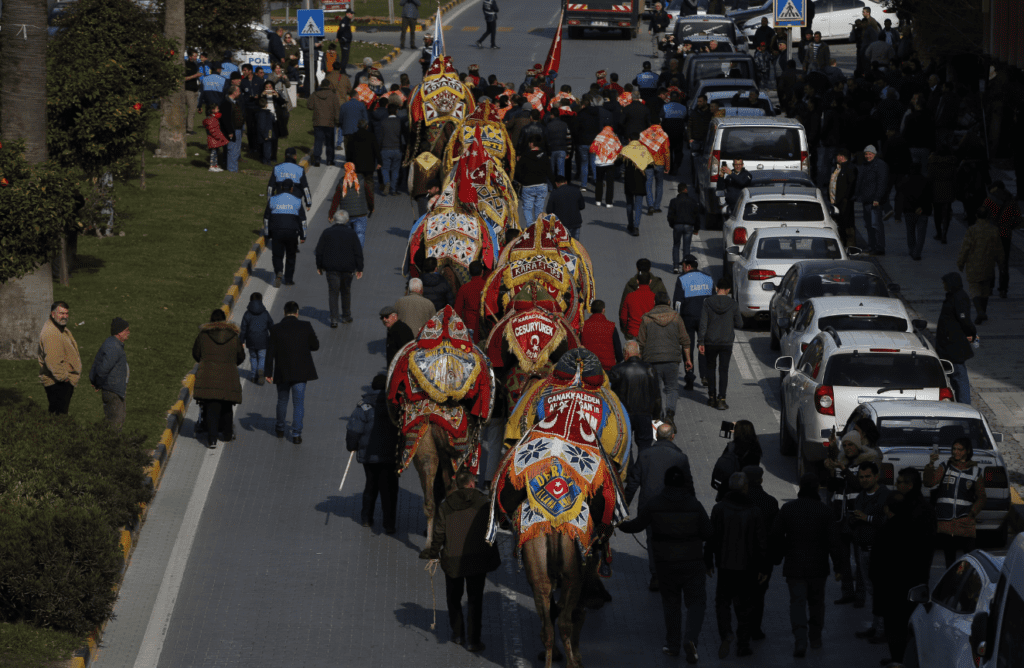
The wrestling league happens every year in the Aegean Region and Mediterranean region in Anatolia. Strict regulation to protect the welfare of the animals who may only wrestle once per day in a match which lasts for only 10 or 15 minutes.
A camel can win in any of three ways; by making the other camel retreat, by making the other camel scream, or by making the other camel fall. Although camel wrestling has certain rules, these rules may vary from area to area. Unlike other sports, camel wrestling does not require a special field or spectators. Most of the time, organizations active in areas such as; education, culture, health, sports or social welfare holds camel wrestling competitions as fundraisers. In some areas, municipalities also help to organize the event so as to bring order and discipline to the competitions.
Neither pari-mutuel arrangements nor betting allowed. Only male camels can wrestle in these contests, and then only those born to female camels with a single hump (dromedary or “yoz” camels) or those with double humps (Bactrian or “buhur” camels). As a class, these wrestling males called “tülü” camels. These camels breed especially for wrestling means that the ancestors of these wrestling camels were wrestlers themselves.
Related Readings
Oil Wrestling in Turkey, Festivals Ceremonies and Celebrations in Turkey, UNESCO Intangible Cultural Heritage Practices in Turkey










